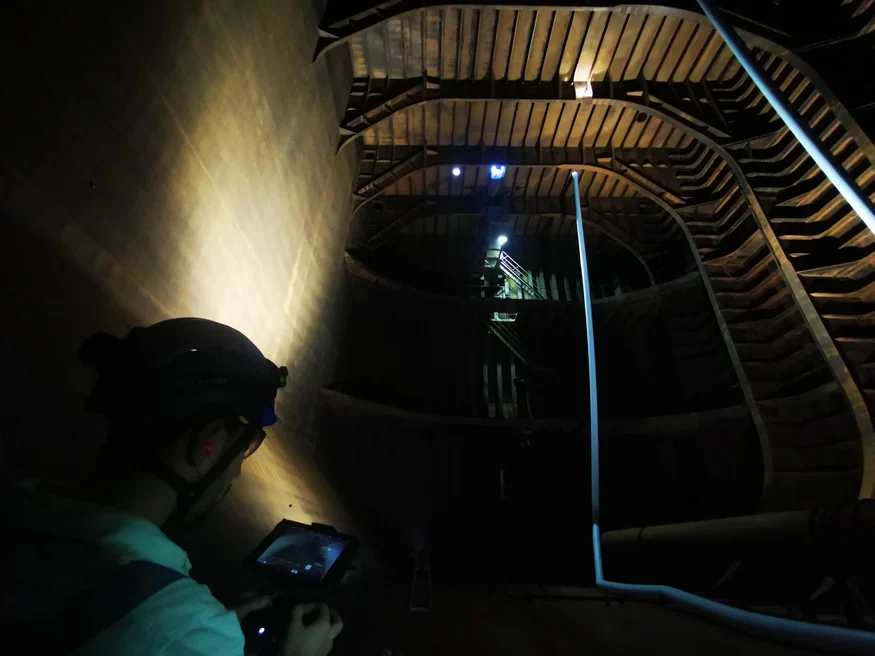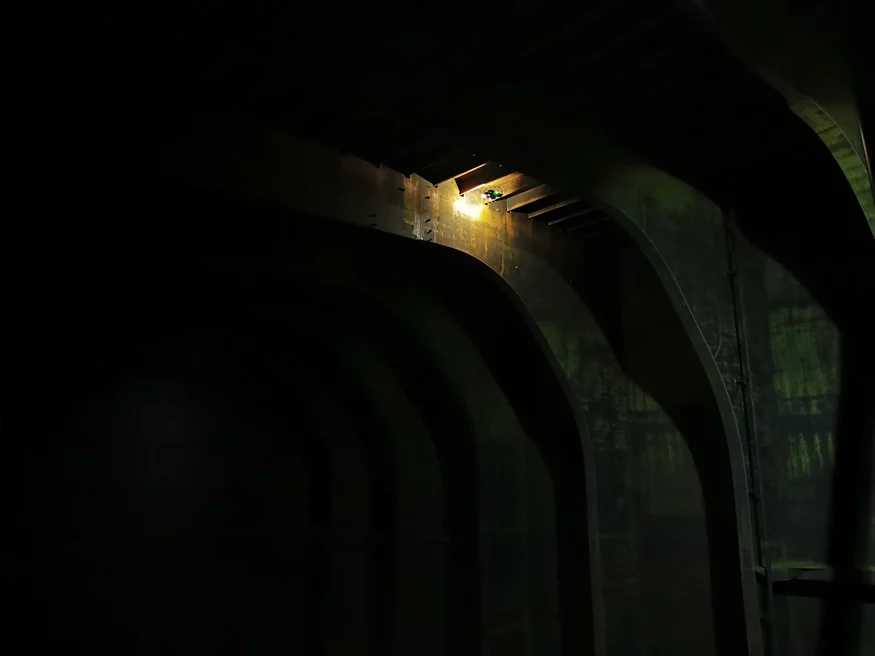C-Bird used the Elios 3 to inspect the hull of a cargo ship, achieving results that were safer, faster, and more efficient than ever before. SAFETY: By using the Elios 3 for hull inspections, there was no need for scaffolding in the cargo tanks, avoiding approximately 10,000 hours of work at height in confined spaces. COST SAVINGS: Replacing scaffolding with the Elios 3 during the vessel survey saved around $1 million, along with significant time and logistical savings. ENVIRONMENTAL BENEFITS: Using a drone instead of rafting to inspect cargo tanks avoids generating large volumes of oil-contaminated water that require treatment before disposal. DATA QUALITY: The onboard LiDAR on the Elios 3 enabled accurate data localization and easy sharing of findings with all stakeholders during the survey. Over 90% of the world’s cargo vessels are subject to the IACS Common Structural Rules (CSR), which set standards for design, construction, and operation of ships based on their classification. Once a vessel is in service, it must renew its class certification every five years. A major part of this renewal involves a hull survey to assess structural integrity. For crude oil tankers, these inspections are especially challenging because much of the structure inside the cargo oil tanks (COT) is out of reach, making traditional methods like scaffolding or rafting necessary. Scaffolding can be dangerous and costly, while rafting poses environmental risks due to the large volume of contaminated water involved. Both methods also increase the risk of foreign objects being left behind, potentially causing damage once the vessel returns to service. The scale of a cargo tank is immense—scaffolding here can rise tens of meters high, making detailed inspections extremely difficult. As vessels age, the complexity and cost of hull surveys increase. For vessels over 15–20 years old, the cost of scaffolding alone can exceed $1 million, often representing a large portion of the total project cost. This not only increases financial burden but also raises safety and operational risks. A U.S.-based oil tanker operator needed to conduct a No. 4 Special (20-year-old) periodic survey on one of its vessels. The 250-meter ship, classified by the American Bureau of Shipping (ABS), was undergoing dry docking in Southeast Asia for class renewal and other maintenance work. The company had been working with C-Bird for several years, utilizing the Elios 2 for close-up inspections. Their experience showed that drones significantly reduced the need for scaffolding during class renewal surveys. The goal was to conduct the hull survey using the Elios 3 with minimal or no human entry into the hull, reducing risks while still collecting all necessary data. Initially, they considered an underwater ROV, but C-Bird's expertise with the Elios series made them confident that the drone was the better choice. Although Malcolm Connolly, a C-Bird pilot, had used the Elios 2 before, he opted for the Elios 3 for this specific project. He wanted to use the LiDAR live map to navigate areas where visibility was limited. He also tested the new UT payload for ultrasonic thickness measurements. Malcolm guides the drone through the empty space during the hull inspection. The drone was flown into the cargo tanks without any personnel entering the space. Malcolm flew around the entire hull, capturing 4K video and real-time 3D LiDAR scans of the structures. The data was then processed in Inspector 4, creating a full 3D model of the area and clear visual records. The Elios 3 combines LiDAR data with visual feeds for comprehensive inspection. The Elios 3’s 3D Live Map allowed C-Bird to ensure complete coverage of the required areas without anyone entering the cargo oil tanks. This eliminated the need for confined space entry, reduced the risk of dropped objects, and minimized manual handling and crew support. It also cut down setup time for each tank. Malcolm Connolly, CEO and founder of C-Bird, said, “The 3D laser scan from the Elios 3 allows for precise data localization. This brings us closer to true risk-based asset management and automation. Reliable data localization means we can repeat surveys accurately, measure changes over time, and even predict degradation rates using machine learning. That’s the future of marine and many other industries.†He highlighted several key advantages of the Elios 3, including: Thanks to the Elios 3, C-Bird completed a safer, faster, and more efficient hull inspection. By avoiding scaffolding, over 10,000 hours of work at height were saved. C-Bird and their client both noted the simplified logistics and environmental benefits, as the drone eliminated the need for water-filled rafting. They also saw the value of the Elios 3 as a reliable alternative to underwater ROVs. The Elios 3 provided enough accurate data for the class renewal, helping the vessel get reclassified successfully. This case study shows how advancements in drone technology are reshaping the maritime industry, making inspections smarter, safer, and more sustainable. Steel Wire Mesh Gloves,Butchers Gloves Metal Mesh,Steel Gloves For Butchers,Butchers Mesh Gloves glorybest industry co.,ltd , https://www.hbglorybest.comRemote Hull Inspection Saves $1 Million with the Elios 3
Key Benefits at a Glance

Searching for a Safer and More Efficient Inspection Method
Inspecting the Ship's Hull with the Elios 3 Drone


How the Elios 3 Transforms Hull Inspections in the Maritime Industry

Transforming Cargo Vessel Hull Inspections with Drone Technology